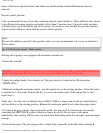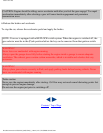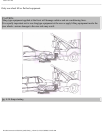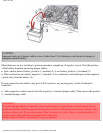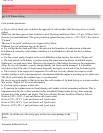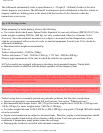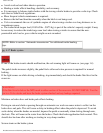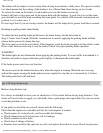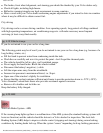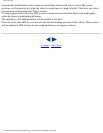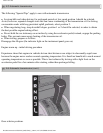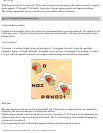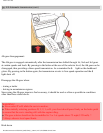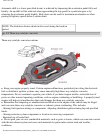
1993 Volvo 940
The brakes will be subject to severe strain when driving in mountains or hilly areas. The speed is usually
low which means that the cooling of the brakes is less efficient than when driving on level roads.
To reduce the strain on the brakes it is advisable not to use the brakes excessively.
Instead, shift into a lower gear and let the engine help with the braking. A good rule is to use the same
gear downhill as would be used ascending the same grade. for vehicles with automatic transmission use
position 2 or, in some cases, 1.
Do not forget that, if you are towing a trailer, the brakes will be subjected to greater load than is normal.
Breaking-in parking brake (hand brake)
To obtain the best parking brake performance, the brake linings should be broken-in.
Stop 5-7 times from 30 mph (50 km/h). transmission in neutral, applying the parking brake with the
release button pressed in during the stop.
The force must not lock the rear wheels. If this happens, rotate the brake enough to let the wheels rotate.
Drive a mile between each stop to cool the brakes. Check for proper parking brake operation.
WARNING!
The brake lights are not illuminated when applying the parking brake. To warn traffic from behind it is
therefore advisable to depress the brake pedal slightly to illuminate the brake lights.
If the brake power-assist does not function
The power assist to the brakes functions only when the engine is running. When the car is moving
without the engine running the brake pedal pressure required to stop the car is increased by 3-4 times.
The brake pedal feels stiff and hard.
pg. 4:18 Long distance trip
Before a long distance trip
It is always worthwhile to have your car checked at a Volvo dealer before driving long distances. Your
dealer will also be able to supply you with bulbs, fuses, spark plugs and wiper blades for your use in the
event that problems occur.
If you prefer to check the car yourself, please note the following:
Check that the engine runs smoothly and that fuel consumption is normal.
● Check engine oil, coolant levels, and for possible fuel leakage.
● Check transmission oil level and rear axle for leakage.
● Check condition of drive belts.
● Check state of charge of battery.
● Examine tires carefully (the spare tire as well), and replace those that are worn. Check tire pressures.
file:///K|/ownersdocs/1993/1993_940/93940_4_12.html (7 of 9)12/30/2006 9:44:29 AM



